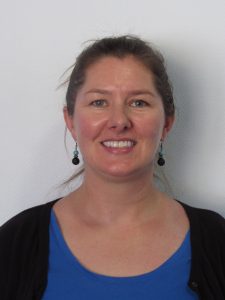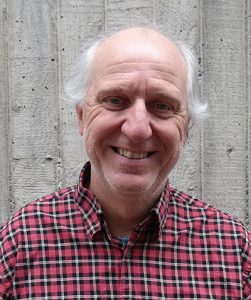Isotopic measurements of DIC are contributing to our understanding of biogeochemical and paleoceanographic processes. Until recently, only a few laboratories had the ability to make the precise isotope measurements necessary for studying ocean circulation and the uptake of anthropogenic carbon. At present, there are no recognized standards or reference materials for carbon isotopes in seawater.
This new activity sponsored by OCB aims to define methods of best practice for the measurement of DI13C and DI14C with the goal of guaranteeing data comparability of all measurements across laboratories and over time. We will assemble researchers from laboratories making DI13C and/or DI14C measurements to discuss the different methods in use, recommend best practice protocols, and decide on the best source of reference materials.
November 1-3, 2021 (virtual)
Ann McNichol (WHOI)
Roberta Hansman (WHOI/NOSAMS)
Robert Key (Princeton Univ)
Rolf Sonnerup (Univ Washington)




| Monday, November 1 | Collection and Analysis | All times are in EST |
| 10:00a-10:15a | Introduction: Goals of workshop | Ann McNichol, WHOI |
| 10:15a-12:00p | Analytical Techniques -Collection, preservation, extraction methods, results -Working standardsWatch recording Part 1 |
Kalina Gospodinova José Quintanilla Brett Walker and Jennifer Walker Sarah Murseli Katy Sparrow Terry Rolfe Maxi Castrillejo Wei-Jun Cai |
| 12:00p-12:30p | Break | |
| 12:30p-1:30p | Breakout groups 12:30p - Collection / preservation / storage 12:50p - Extraction Methods 1:10p - Summary/Miscellaneous |
|
| 1:30p-2:00p | Summary from each group |
| Tuesday, November 2 | Interlaboratory comparisons & Definitions and practices for reporting uncertainties | |
| 10:00a-10:45a | Introduction -Historical interlaboratory comparisons |
Roberta Hansman, WHOI NOSAMS Ann McNichol Maxi Castillejo |
| 10:45a-11:15a | Database-level data processing and reporting | Bob Key, Princeton Univ |
| 11:15a-11:30a | Overview of afternoon discussion topics - Reporting uncertainties - Future interlaboratory comparisonsWatch recording Part 1 |
|
| 11:30a-12:00p | Break | |
| 12:00p-1:30p | Breakout group discussions Reporting uncertainties - Laboratory-level data processing - Best practices / recommendationsFuture interlaboratory comparisons - Format (materials, participants, frequency) - Funding (cost, source) |
|
| 1:30p-2:00p | Summary from each group |
(Homework for Day 3: View Andrew Dickson video: CO2-in-seawater reference materials: yesterday, today, and tomorrow)
| Wednesday, November 3 | Development of Reference Materials | |
| 10:00a-10:30a | Introduction Current practices |
Rolf Sonnerup, Univ Washington |
| 10:30a-12:00p | Short and long term strategies Inter-laboratory comparison exercises Panel Discussion: Strategy for going forwardWatch recording Part 1 |
Andrew Dickson NIST Bob Key Denis Pierrot NOSAMS Liz Canuel Maxi Castrillejo |
| 12:00p-12:30p | Break | |
| 12:30p-1:15p | Breakout groups | |
| 1:15p-2:00p | Summary and Conclusions |
Atekwana E.A., Krishnamurthy R.V. Seasonal variations of dissolved inorganic carbon and 13C of surface waters: application of a modified gas evolution technique (1998). Journal of Hydrology 205, 265-278
Barnett BK, Chanton JP, Ahrens R, Thornton L, Patterson WF, III (2020) Life history of northern Gulf of Mexico Warsaw grouper Hyporthodus nigritus inferred from otolith radiocarbon analysis. PLoS ONE 15(1): e0228254.
Casacuberta, N., Castrillejo, M., Wefing, A., Bollhalder, S., & Wacker, L. (2020). High Precision 14C Analysis in Small Seawater Samples. Radiocarbon, 62(1), 13-24. doi:10.1017/RDC.2019.87
Cheng, L., Normandeau, C., Bowden, R., Doucett, R., Gallagher, B., Gillikin, D.P., Kumamoto, Y., McKay, J.L., Middlestead, P., Ninnemann, U., Nothaft, D., Dubinina, E.O., Quay, P., Reverdin, G., Shirai, K., Mørkved, P.T., Theiling, B.P., van Geldern, R. and Wallace, D.W.R. (2019), An international intercomparison of stable carbon isotope composition measurements of dissolved inorganic carbon in seawater. Limnol Oceanogr Methods, 17: 200-209. https://doi.org/10.1002/lom3.10300
Gao, Pan, Xu, Xiaomei, Zhou, Liping, Pack, Mary A., Griffin, Sheila, Santos, Guaciara M., Southon, John R., Liu, Kexin, (2014), Rapid sample preparation of dissolved inorganic carbon in natural waters using a headspace-extraction approach for radiocarbon analysis by accelerator mass spectrometry, Limnol. Oceanogr. Methods, 12, doi:10.4319/lom.2014.12.174.
Gospodinova, K., McNichol, A.P., Gagnon, A. and Shah Walter, S.R. (2016), Rapid extraction of dissolved inorganic carbon from seawater and groundwater samples for radiocarbon dating. Limnol. Oceanogr. Methods, 14: 24-30. https://doi.org/10.1002/lom3.10066
, , , & (2021). Future Changes in δ13C of Dissolved Inorganic Carbon in the Ocean. Earth's Future, 9, e2021EF002173. https://doi.org/10.1029/2021EF002173
Kelsey McDuffee, Ellen R.M. Druffel (2007). Daily variability of dissolved inorganic radiocarbon in Sargasso Sea surface water. Marine Chemistry, Volume 106, Issues 3–4, 510-515, https://doi.org/10.1016/j.marchem.2007.05.003.
, , , & (2018). Changes to the air-sea flux and distribution of radiocarbon in the ocean over the 21st century. Geophysical Research Letters, 45, 5617– 5626. https://doi.org/10.1029/2018GL078172
McNichol, A., Jones, G., Hutton, D., Gagnon, A., & Key, R. (1994). The Rapid Preparation of Seawater ΣCO2 for Radiocarbon Analysis at the National Ocean Sciences Ams Facility. Radiocarbon,36(2), 237-246. doi:10.1017/S0033822200040522
Murseli, S., Middlestead, P., St-Jean, G., Zhao, X., Jean, C., Crann, C., . . . Clark, I. (2019). The Preparation of Water (DIC, DOC) and Gas (CO2, CH4) Samples for Radiocarbon Analysis at AEL-AMS, Ottawa, Canada. Radiocarbon,61(5), 1563-1571. doi:10.1017/RDC.2019.14
Su, Jianzhong, Wei-Jun Cai, Najid Hussain, Jean Brodeur, Baoshan Chen, Kuan Huang. 2019. Simultaneous determination of dissolved inorganic carbon (DIC) concentration and stable isotope (δ13C-DIC) by Cavity Ring-Down Spectroscopy: Application to study carbonate dynamics in the Chesapeake Bay, Marine Chemistry, Volume 215, 103689, https://doi.org/10.1016/j.marchem.2019.103689.
Torres, Marta E., Mix, Alan C., Rugh, William D., (2005), Precise δ13C analysis of dissolved inorganic carbon in natural waters using automated headspace sampling and continuous-flow mass spectrometry. Limnol. Oceanogr. Methods, doi:10.4319/lom.2005.3.349.